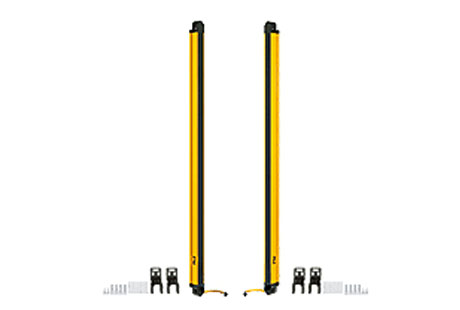What Is Category 3 Safety?
Key Takeaway
Category 3 safety refers to a specific level of protection within safety circuits as defined by safety standards. These circuits are designed with two hardwired channels to ensure a high level of reliability and fault tolerance. This setup is commonly found in machinery that includes a “safe-off” functionality, which is crucial for stopping equipment quickly and safely in an emergency.
The design of Category 3 safety systems includes the use of well-tried components and principles, enhancing their reliability. These systems are capable of detecting and reacting to certain faults, ensuring that safety functions remain operational even in the event of a component failure. This makes them ideal for applications where operator safety is critically dependent on the integrity of safety functions.
Defining Category 3 Safety
Category 3 safety standards are crucial in environments where the failure of a specific safety function could lead to significant harm. These standards require that safety systems remain operational despite any single fault. This level of protection is designed to ensure that, in the event of a component failure, the overall system still has the capability to perform its intended safety function, thereby providing an additional layer of security.

Components of a Category 3 Safety System
A Category 3 safety system typically includes redundant circuits and dual-channel monitoring to prevent any single failure from disabling the safety function. Components like safety relays, dual processors, and automatic self-checking mechanisms are common. These elements work together to detect and respond to faults in real time, ensuring continuous protection even under adverse conditions.
You May Like to Read
How Category 3 Safety Systems Operate
Category 3 systems operate on the principle of redundancy and fault tolerance. This means that the system continuously monitors itself and can identify faults in any part of the safety function. Upon detecting a fault, the system will attempt to engage the backup components to maintain safety operations, or it will move to a safe state where operations can be halted safely without risking harm to operators or machinery.
Comparing Category 3 with Other Safety Categories
Category 3 safety offers a balanced approach between cost and operational integrity, designed to manage single faults without stopping machine operations. This makes it more advanced than Category 2, which requires system shutdown upon fault detection and does not support continuous operation during faults. Unlike Category 4, which provides the highest safety with systems capable of handling multiple simultaneous faults, Category 3 is suitable for areas with significant but not extreme risks. This category ensures reliability without the complexity and cost of Category 4, making it ideal for a wide range of industrial applications where moderate safety and minimal downtime are crucial.
Benefits of Implementing Category 3 Safety
Implementing Category 3 safety offers significant benefits, including enhanced reliability and increased trust in safety operations, critical in moderately to highly hazardous industrial environments. It reduces downtime by allowing systems to operate safely, even when minor faults occur, and enhances compliance with international safety standards, protecting businesses from potential legal and financial repercussions.
Conclusion
Understanding and implementing Category 3 safety is vital for maintaining operational integrity and protecting lives in environments where equipment failure could result in severe consequences. By ensuring that safety systems can handle faults effectively, businesses can not only safeguard their personnel but also improve their operational efficiency and reliability. Emphasizing the adoption of Category 3 safety practices demonstrates a commitment to maintaining high safety standards and fostering a culture of continuous improvement within the industry.
